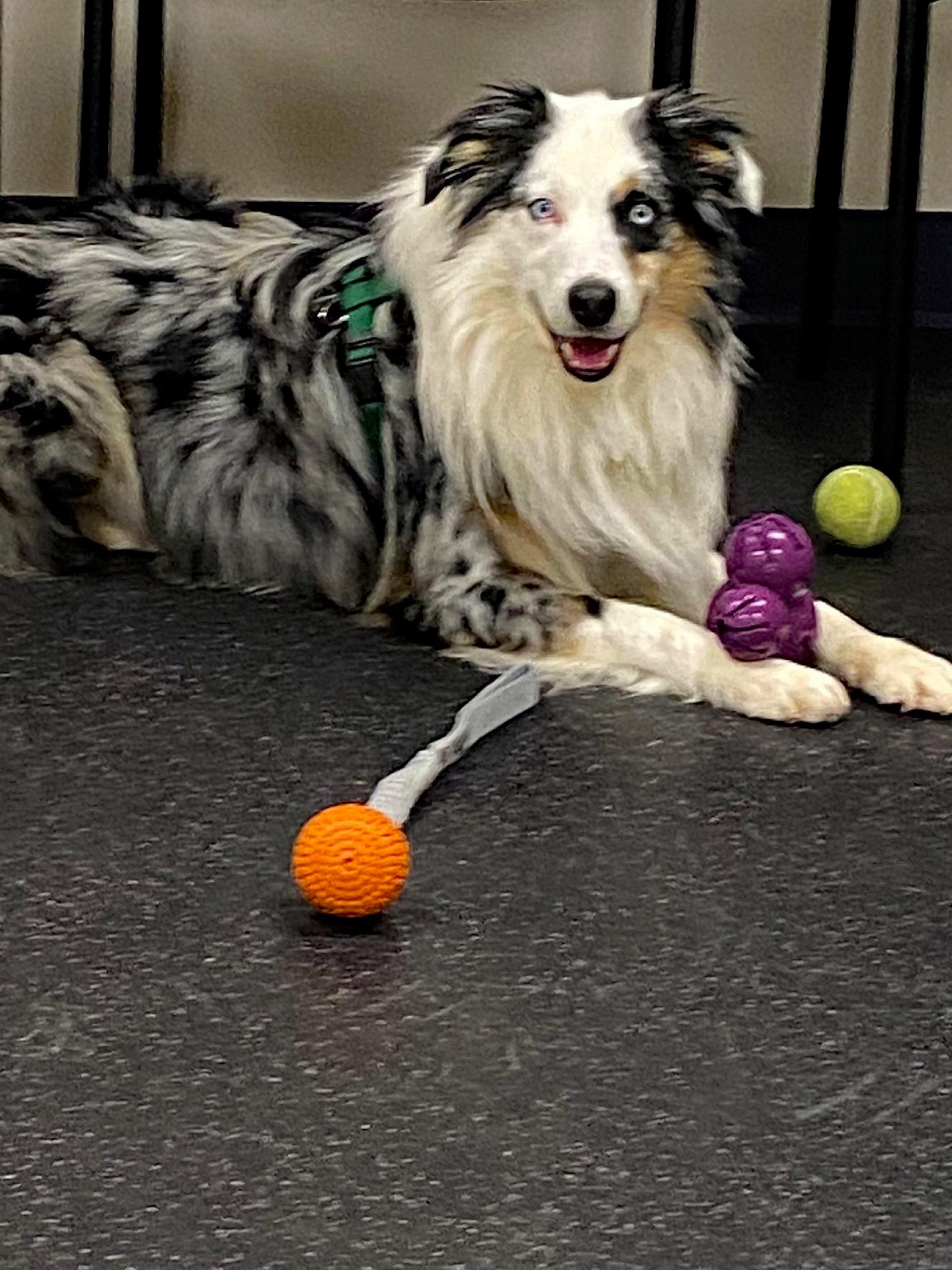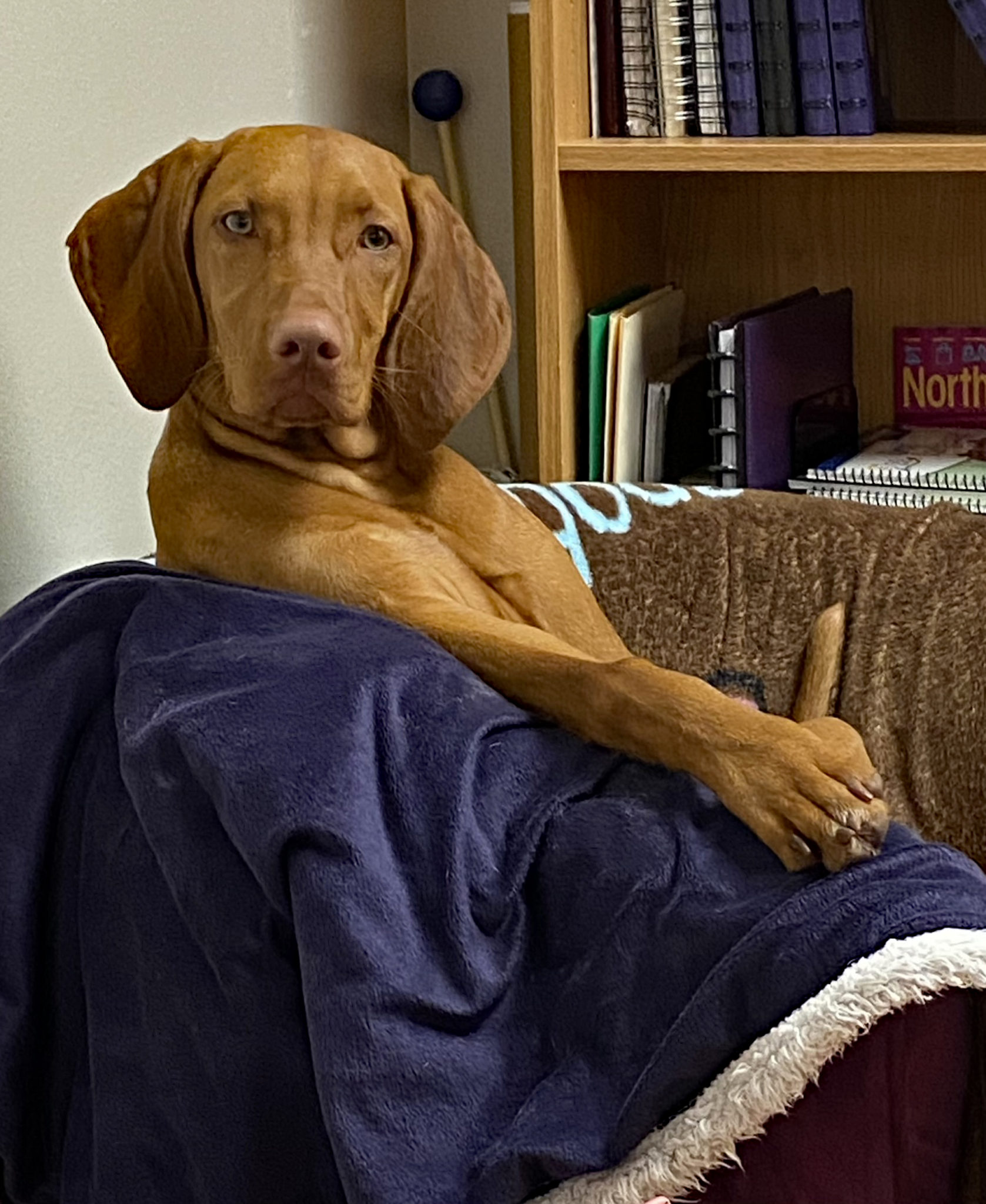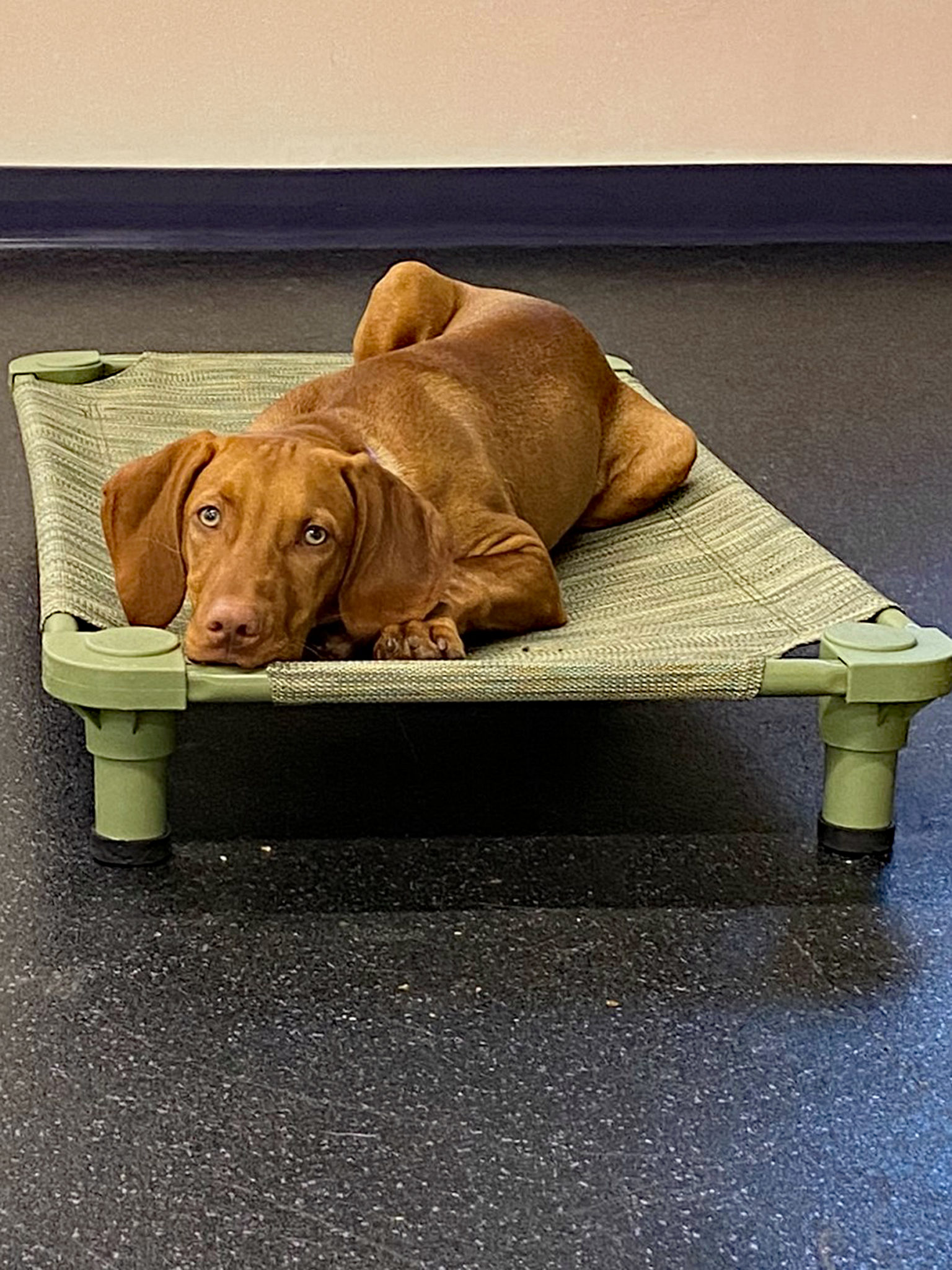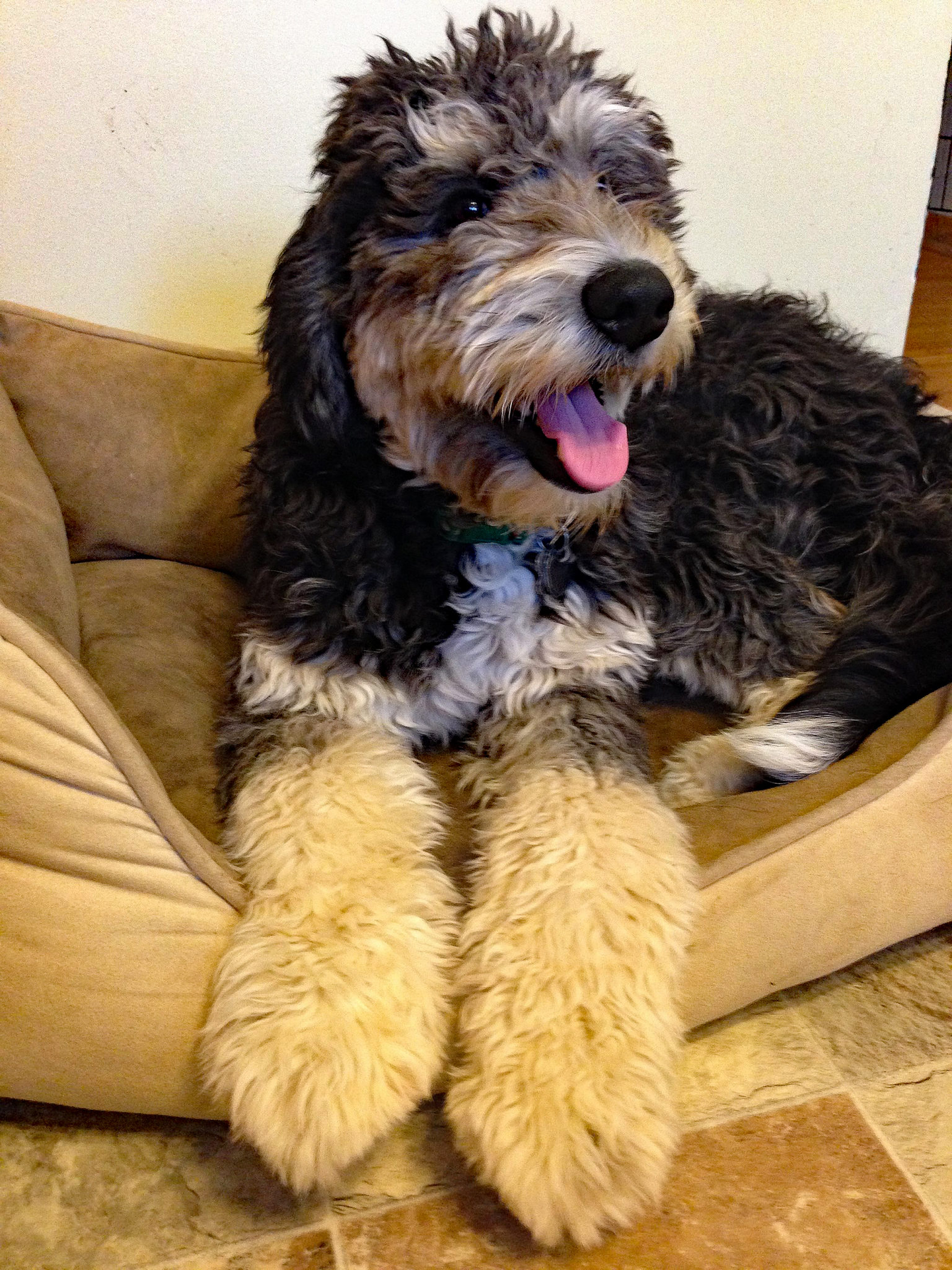The Teenage Zone – Surviving Your Dog’s Adolescence

Alexandria, VA – My puppy Joey was six months old a few weeks ago. The follow-me-everywhere, come-with-a-kissy-noise, and pay-more-attention-to-me-than-the-environment puppy is becoming a teenager.
Puppies two to three months of age see us humans as their world. They, indeed, have the attention span of a gnat. But, when we have their attention, it’s all about us. But as their senses become more defined, they see, hear, and smell better, the environment starts to take over. Sadly, we can become chopped liver. Or, for those of you who like chopped liver, milk toast.
You get my point here. The solution is to make ourselves sexier than a squirrel or a dog walking across the street. How? Reinforce, reinforce, reinforce the behaviors that you want. Manage your teenager’s environment, so they don’t get to practice and rehearse these unwanted behaviors. If it’s already too late, redirect, substitute, and reward. Reinforcement drives behaviors. We must build value in ourselves. Become our teen’s giant cookie!

Setting your adolescent up for success is critical. I find this so important with my pre-teen Joey. Her great uncle Jack would never counter surf, steal toilet paper or shoes, or dig holes in the yard. Great niece Joey does them all. Of course, as I tell my clients, don’t chase the pups. They love that game. Instead, trade! It works if you practice it daily for a few minutes.
Start with lower-value items, such as crumpled pieces of paper. Then, work up to higher-value items. What are they? Whatever is most reinforcing to your dog. For some dogs, it’s glasses, cell phones, remote controls, and other crunchy stuff. For others, it’s rocks, pine cones, and toilet paper. Joey’s infatuated with toilet paper.
Puppies head into adolescence at about five to six months of age. By seven or eight months, they are big teenagers. This phase can last until your dog is two to three years old, plus or minus. It can be a challenging phase for their puppy parents.

First and foremost, they’re teenagers! They start to become more independent and develop “selective hearing.” Simple behaviors you taught them weeks ago and thought were reliable aren’t now. You might notice more nipping, barking, and jumping as arousal and frustration levels increase.
Does this sound like some human teenagers you might know? Speaking of selective hearing and becoming more independent, Joey and I were heading into the house after a play session the other day. I said my cue, “Let’s go inside.” Joey’s been great about following me right in. This time, however, my teenager just stood there looking at me, assessing her options. Instead of following me in, she turned and ran back into the yard. Hrumph! Don’t get mad; get training!
So how do you smooth the transition from puppy to mature adult?
Patience: Have patience, and then have more patience. Do not expect quick fixes. If a trainer tells you that, they need to be better versed in dog behavior, how dogs think, and how they learn. There is no humane quick fix.
Training: Start rewarding your dog for making the right behavior choices. Take a group class. We have an Adolescent Life Skills class starting soon. Review the basics and practice in various environments and around distractions to “proof” behavior reliability. Teach a new behavior or trick every week to keep things fun, novel, and fresh. Use some of his daily meal allotment for training treats. Ditch the bowl or part of it. Hand-feeding can be very powerful in building a positive relationship. Remember, reinforcement drives behavior.
Play: Play with your dog. Play helps to build a positive relationship with you and gives dogs some fun and enrichment as part of the training process. Adding games such as tug, fetch, hide and seek, relaxation, and calming games, of which there are quite a few, can also provide you with training opportunities to teach your pup how to modulate their arousal, improve self-control and build solid recalls.
Mental and Physical Activities: Adolescent dogs tend to have a lot of excess energy; providing appropriate and ample exercise can pay off big time. Set up some playdates with neighborhood teens. Helping your big teen learn appropriate play styles in one-on-one play in a controlled environment incorporating breaks to lower arousal can better ensure positive associations with other dogs. Remember to include brain games and treat dispensing toys that encourage problem-solving and slow down their eating.
Stay Positive and Upbeat: Focus on what you want your pup to do instead of what you don’t want them to do. That is the formula for modifying unwanted behaviors. Teach your dog that engagement with you is fun and rewarding. When interacting with your young dog, capture (mark and reward) all behaviors you like, even if you didn’t ask for it. All living things will repeat rewarding behaviors. Before you know it, your “give me the keys and some money, I want to go to the mall” teen will instead look to you for engagement, making training reinforcing for both of you. After all, you have all the good stuff!

Consistent daily training, mental stimulation, play, exercise, and socialization, will put you on the path to developing a well-mannered, intelligent canine companion that’s a joy to live with.
Sandy Modell, CPDT-KA, is the Founder, Owner, and Head of Training of Wholistic Hound Academy, Alexandria’s award-winning, premier canine training and learning center — offering classes and private lessons in puppy training, adolescent and adult foundation and life skills, behavior modification, agility, dog sports and canine fitness and conditioning, kids and dogs, pre-pet planning and pet selection. Classes are starting soon! Visit www.wholistichound.com to enroll in our programs, and like us on Facebook.com/wholistichound and follow us on Instagram at Instagram.com/wholistichound.
ICYMI: Paws Up! Can’t Miss The First-Ever Del Ray Dog Fest!




